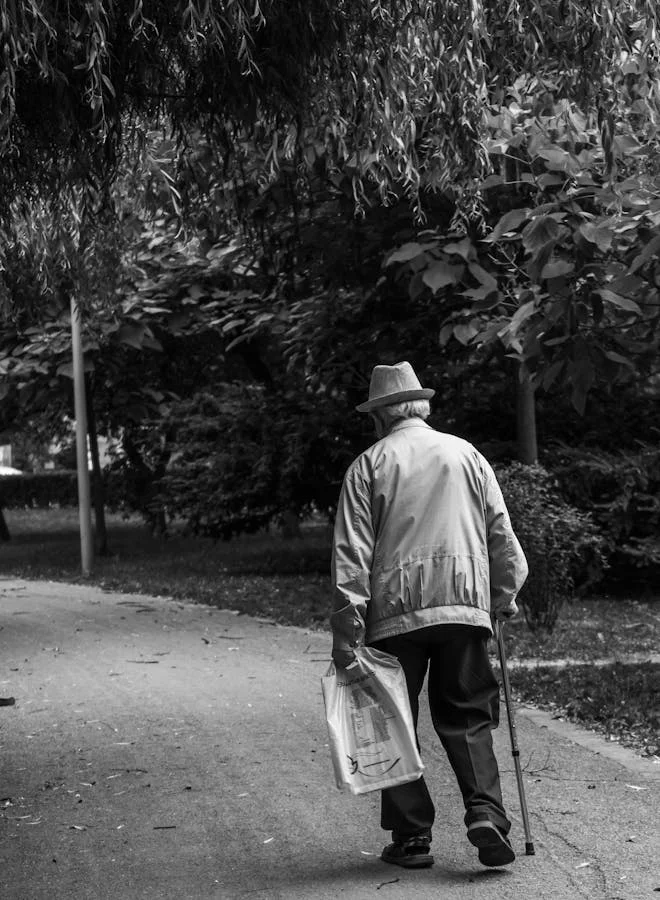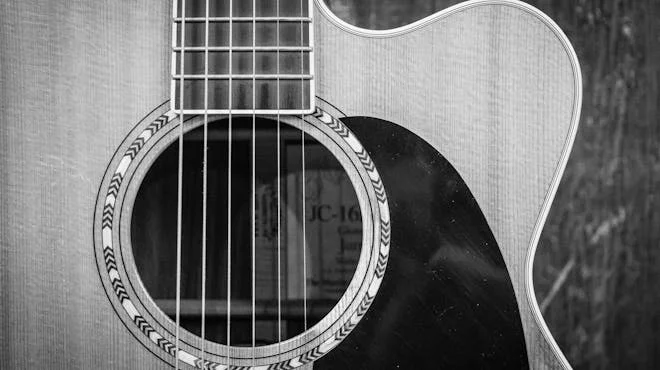
Have you ever wondered what stories lie behind the tattoos that people wear? How do they reflect their personalities, memories, or emotions? In this article, we will explore one of the most captivating poems about tattoos, written by Ted Kooser, a Pulitzer Prize-winning American poet and former U.S. Poet Laureate. The poem is called “Tattoo,” and it was published in Poetry Magazine in 2003.
Here, we will comprehensively analyze the poem “Tattoo” by Ted Kooser. We will explore various literature-related aspects, including the poem’s subject, the author’s background, the poem’s context, its theme and tone, and the form or structure of the poem. By examining these elements, we aim to provide a complete and detailed understanding of this intriguing piece of literature.
Tattoo What once was meant to be a statement— a dripping dagger held in the fist of a shuddering heart—is now just a bruise on a bony old shoulder, the spot where vanity once punched him hard and the ache lingered on. He looks like someone you had to reckon with, strong as a stallion, fast and ornery, but on this chilly morning, as he walks between the tables at a yard sale with the sleeves of his tight black T-shirt rolled up to show us who he was, he is only another old man, picking up broken tools and putting them back, his heart gone soft and blue with stories.
Content
- About the Author of “Tattoo” by Ted Kooser
- About the Poem “Tattoo” by Ted Kooser
- Theme and Tone of “Tattoo” by Ted Kooser
- Form and Structure of “Tattoo” by Ted Kooser
- Rhyme scheme of “Tattoo” by Ted Kooser
- Poetic Devices of “Tattoo” by Ted Kooser
- Line-by-line Analysis of “Tattoo” by Ted Kooser
- Summary of “Tattoo” by Ted Kooser
- Conclusion
About the Author of “Tattoo” by Ted Kooser
Ted Kooser was born in Ames, Iowa, in 1939. He graduated from Iowa State University and the University of Nebraska-Lincoln, where he later taught creative writing. Subsequently, he worked as an insurance executive for 35 years, writing poetry in the early mornings before going to his office.
He published several collections of poetry, including Delights & Shadows, which won the Pulitzer Prize in 2005. He also wrote nonfiction books, such as Local Wonders: Seasons in the Bohemian Alps and The Poetry Home Repair Manual: Practical Advice for Beginning Poets. He served as the U.S. Poet Laureate from 2004 to 2006. Kooser is known for his conversational style and his depiction of everyday life in the Midwest.
About the Poem “Tattoo” by Ted Kooser
“Tattoo” is a short poem that consists of 15 lines, divided into three stanzas of five lines each. The poem lacks a regular rhyme scheme or meter. However, it incorporates sound devices like alliteration, assonance, and consonance to infuse musicality and rhythm. The poem is written from the third-person point of view of an unnamed speaker who observes an old man at a yard sale.
The speaker directs their attention to the tattoo on the man’s shoulder. It portrays a dripping dagger held in the fist of a shuddering heart. The speaker imagines the meaning and history of the tattoo and contrasts it with the present appearance and situation of the man. The poem explores the themes of aging, memory, identity, and change. Furthermore, it uses the tattoo as a symbol of the past and the present, the personal and the universal, the permanent and the transient.
Theme and Tone of “Tattoo” by Ted Kooser
The main theme of the poem is the passage of time and its effects on people and their identities. The poem shows how the tattoo, which was once a statement of the man’s personality, is now just a bruise on his bony old shoulder, faded and distorted by age. Additionally, it also implies a shift in the man’s life from adventurous and rebellious to mundane and ordinary. This transition is evident as he strolls between the tables at a yard sale, handling broken tools with care.
The poem implies that the man’s heart, which was once shuddering with passion and emotion, is now soft and blue with stories, perhaps nostalgic or regretful. The poem also hints at the theme of mortality, as the tattoo is a reminder of the man’s youth and vitality, which are now gone.
The poem’s tone is sympathetic and reflective, as the speaker expresses a sense of curiosity and compassion for the old man and his tattoo. The speaker refrains from judgment or mockery and instead seeks to understand and appreciate the man’s life and choices. The speaker also uses gentle and poetic language, with vivid imagery and metaphors, to convey the beauty and sadness of the poem. The poem’s tone remains realistic and honest throughout, avoiding idealization or romanticization of the past or present. Instead, it acknowledges the truth and complexity inherent in both.
Form and Structure of “Tattoo” by Ted Kooser
The poem has a simple and clear form and structure, which contrast with the complex and ambiguous content and meaning of the poem. The poem is divided into three stanzas of five lines each, with no rhyme scheme or meter.
The first stanza introduces the tattoo and its original significance; the second stanza describes the current appearance and situation of the man and his tattoo; and the third stanza reveals the speaker’s thoughts and feelings about the man and his tattoo.
The poem uses enjambment, or the continuation of a sentence or a clause across a line break, to create a smooth and natural flow. It also uses punctuation, such as commas, dashes, and periods, to create pauses and breaks in the poem, which emphasize certain words or phrases, or to create a contrast or a transition between different parts of the poem.
The poem has a balanced and symmetrical structure, which creates a sense of harmony and order in the poem. However, the poem also incorporates variations and irregularities, like employing different line lengths. These elements contribute to the poem’s sense of diversity and movement, enhancing its overall effect.
Rhyme scheme of “Tattoo” by Ted Kooser
Rhyme scheme refers to the pattern of rhymes at the end of each line in a poem. It plays a significant role in shaping the structure and rhythm of a poem, contributing to its overall musicality and impact on the reader. In the case of “Tattoo” by Ted Kooser, the poem follows a free verse form, meaning it does not adhere to a strict rhyme scheme. Instead, Kooser relies on other poetic devices, such as imagery, metaphor, and symbolism, to convey the themes and emotions of the poem.
Without a specific rhyme scheme, each line in “Tattoo” is free to stand on its own. This allows the poet more flexibility in expressing ideas and emotions. Furthermore, this lack of strict rhyme contributes to the poem’s conversational tone and allows for a more natural flow of language.
However, while “Tattoo” may not have a traditional rhyme scheme, it still exhibits elements of internal rhyme and slant rhyme. This is where words within the lines or at the end of lines share similar sounds. As a result, this subtle use of rhyme adds texture to the poem and enhances its lyrical quality without conforming to a specific pattern.
Overall, the absence of a strict rhyme scheme in “Tattoo” does not diminish its poetic impact. Instead, it allows Kooser to focus on other aspects of poetic craft. This creates a rich and evocative piece that resonates with readers through its imagery, language, and themes.
Poetic Devices of “Tattoo” by Ted Kooser

Metaphor: The line “a dripping dagger held in the fist” uses metaphor to liken the tattoo to a dagger dripping with blood. It symbolizes its sharp, impactful nature.
Personification: “Where vanity once punched him hard” personifies vanity by attributing human actions to it. It highlights its forceful impact on the man’s life.
Simile: The line “strong as a stallion” employs a simile to directly compare the man’s strength to that of a powerful horse. It emphasizes his resilience and vigor.
Imagery: Throughout the poem, vivid imagery is employed to paint visual and sensory impressions. Examples include “a shuddering heart” and “the spot where vanity once punched him hard,” creating a vivid mental picture for the reader
Metonymy: “The sleeves of his tight black T-shirt” utilizes metonymy by indirectly referring to the man’s tattoo through his clothing. It emphasizes its association with his identity and appearance.
Enjambment: The poem utilizes enjambment, where lines flow into each other without punctuation. This is seen in “broken tools and putting them back,” contributing to the poem’s fluidity and rhythmic structure.
Symbolism: The tattoo symbolizes the man’s past experiences, emotions, and identity. It serves as a tangible representation of his life journey and the stories embedded within it.
Alliteration: In the phrase “dripping dagger,” the repeated “d” sound creates a sense of sharpness and intensity. This enhances the vividness of the imagery and the impact of the metaphor.
Assonance: In the line “a shuddering heart,” the repeated “uh” sound in “shuddering” and “heart” creates a sense of unease and apprehension. This echoes the man’s emotional turmoil.
Consonance: In the phrase “held in the fist,” the repeated “st” sound emphasizes the tightness and tension of the grip. This reinforces the sense of strength and determination conveyed by the simile.
Line-by-line Analysis of “Tattoo” by Ted Kooser
In this section, we will analyze the poem stanza by stanza, line by line. We will identify various literary devices and figures of speech that the poet used. We will also explain how these devices contribute to the meaning and effect of the poem.
Stanza 1
Line 1: “What once was meant to be a statement—”
The first line of the poem introduces the tattoo and its original purpose. It was intended to be a statement or a way of expressing the man’s identity, personality, or attitude. This opening line sets the tone for the poem, introducing the idea of something that was once significant but has now lost its meaning.
The use of the word “statement” suggests that the tattoo was originally intended to convey a message or make a bold statement about the wearer’s identity or beliefs. It highlights the transient nature of symbols and the evolution of personal significance over time. Furthermore, the dash at the end of the line creates a pause and suspense as the speaker prepares to reveal what the statement was.
Lines 2 and 3: “a dripping dagger held in the fist”, “of a shuddering heart—is now just a bruise”
The second and third lines of the poem describe the tattoo in detail, using metaphor and imagery. The tattoo shows a dripping dagger held in the fist of a shuddering heart. This suggests a violent and intense image with connotations of pain, blood, anger, or passion. Additionally, the dripping dagger could symbolize danger, aggression, or rebellion, while the shuddering heart could symbolize fear, excitement, or emotion.
The contrast between the dagger and the heart creates a juxtaposition. This highlights the complexity and contradiction of the man’s character or feelings. The dash at the end of the third line creates another pause and suspense as the speaker prepares to reveal what the tattoo is now.
Lines 4 and 5: “on a bony old shoulder, the spot”, “where vanity once punched him hard”
The fourth and fifth lines of the poem show how the tattoo has changed over time, using a simile and a personification. The tattoo is now just a bruise on a bony old shoulder. This comparison implies that the tattoo has lost its color, shape, and clarity. It suggests that it has become faded, distorted, and unrecognizable.
The use of imagery here emphasizes the physical location of the tattoo—an old, bony shoulder. This description conveys a sense of aging and decay, further underscoring the theme of time passing and the fleeting nature of youth and beauty. It paints a picture of the passage of time and the changes that come with age. The specific mention of the “spot” where the tattoo resides adds a sense of intimacy and personal connection. It suggests that the tattoo is an integral part of the wearer’s identity.
The line “the spot where vanity once punched him hard” employs personification, attributing human qualities to the abstract concept of vanity. By suggesting that vanity “punched him hard,” Kooser paints a picture of the tattoo’s wearer as someone who was once consumed by their own ego or desire for attention. It adds depth to the character and hints at their emotional journey. This personification invites readers to consider the ways in which our desires and insecurities can leave lasting marks on our lives.
The phrase also creates a contrast between the past and the present. Once a statement of the man’s vanity, the tattoo is now just a bruise on his shoulder. The period at the end of the fifth line creates a full stop and a closure as the speaker completes the description of the tattoo and its transformation.
Stanza 2
Line 1: “and the ache lingered on. He looks like”
Here, the poet uses imagery to convey the lasting emotional pain associated with the tattoo. The word “ache” suggests a deep, lingering discomfort or sorrow. This emphasizes the enduring impact of the wearer’s past actions or choices. It highlights the emotional weight carried by the tattoo and its lingering effects on the wearer. Additionally, this imagery invites readers to reflect on the emotional resonance of tattoos and the ways in which they can serve as reminders of past joys and sorrows.
The period at the end of the line creates another full stop and closure as the speaker finishes the sentence and the thought about the tattoo and its effects.
Line 2: “someone you had to reckon with,”
This line uses a simile to compare the tattooed man to someone formidable or intimidating—someone “you had to reckon with.” This description adds depth to the character, suggesting that despite his age and physical appearance, he still commands a certain level of respect or attention. It hints at the man’s strength and presence.
The stanza’s second line initiates a fresh idea. It employs the pronoun “he” and the verb “looks” to convey the speaker’s observation of the man. Describing the man as “someone you had to reckon with” implies dealing with someone challenging or formidable. It hints at his imposing appearance or reputation for strength and toughness.
The word “you” creates a direct address to the reader. Consequently, this rhetorical device involves the speaker or the writer talking to the audience or the reader directly. Ultimately, it creates a sense of intimacy or involvement in the poem’s narrative.
The comma at the end of the line creates a pause, signaling a transition. Further, it prepares the reader for further elaboration or support of the statement.
Line 2: “strong as a stallion, fast and ornery,”
The third line of the stanza uses three adjectives to describe the man and his characteristics, using a simile and imagery. The adjective strong implies that the man is capable or influential.
The simile “strong as a stallion,” which compares the man to a male horse, especially one that is not castrated and is used for breeding, suggests that the man is virile, energetic, or wild. Furthermore, the adjective “fast”, implies that the man is agile, swift, or efficient.
The adjective ornery, which means bad-tempered, stubborn, or difficult to deal with, implies that the man is rebellious, defiant, or challenging.
The three adjectives create a vivid and dynamic image of the man. They also support the previous statement that he looks like someone you had to reckon with.
The comma at the end of the line creates another pause and a continuation. It signals that the speaker is preparing to contrast the past and the present.
Line 4: “but on this chilly morning, as he walks”,
Here, the poet sets the scene for the present moment, describing the tattooed man as he navigates a yard sale on a chilly morning. This shift in setting adds depth to the poem. It grounds the reader in the present moment and provides context for the man’s current state.
The adjective “chilly” suggests an uncomfortable, unfriendly, or unwelcoming atmosphere. This reflects both the weather and potentially the man’s mood or feelings. Moreover, it establishes the setting and mood of the poem. This description invites readers to immerse themselves in the scene. It allows them to experience the sensory details of the moment alongside the protagonist.
Line 5: “between the tables at a yard sale”
The preposition “as” introduces the man’s activity of walking between tables at a yard sale. “A yard sale” implies he may be buying, selling, or browsing. It also suggests his life has become mundane, spending time at such an event instead of something more exciting. This hints at a decline in his economic or social status, associated with yard sales’ low prices. The period at the end marks the end of the contrast between the past and present, indicating closure.
Stanza 3

Line 1: “with the sleeves of his tight black T-shirt”
The preposition “with” introduces how the man displays his tattoo and identity. “The sleeves of his tight, black T-shirt” detail his clothing, indicating pride or confidence in his body, while the color “black” emphasizes a rebellious or mysterious demeanor.
Furthermore, wearing a tight T-shirt implies that the man is still proud or confident of his body, or that he wants to appear as such. Additionally, the adjective black, which means having the darkest color or being very dirty or evil, implies that the man is still rebellious, mysterious, or dark, or that he wants to appear as such.
The term “T-shirt” signifies a casual style. This implies that the man is still casual, informal, or relaxed, or that he wants to appear as such.
“Rolled up” suggests intentional or accidental exposure of his tattoo and shoulder, hinting at a desire to make a statement or reveal his past, as the next line suggests. The comma indicates a pause for the speaker to elaborate on the man’s intent or motive.
Line 2: “rolled up to show us who he was,”
The imagery here suggests that the man deliberately reveals his tattoo, rolling up his sleeves to show it off. This action underscores the theme of identity and self-expression. It highlights the importance of the tattoo in shaping the wearer’s sense of self. Furthermore, it adds depth to the character’s motivations and desires. This imagery invites readers to consider the significance of tattoos as markers of personal identity and expression and their role in shaping our perceptions of ourselves and others.
The phrase “to show us who he was” implies that the man still holds onto his past identity, either for himself or to convey it to others. The use of “was” indicates a change in identity over time. The comma at the end of the line creates another pause and a continuation as the speaker prepares to describe the man’s reaction or behavior.
Line 3: “he is only another old man, picking up”
This line marks a shift in perspective as the poet reflects on the man’s true nature beneath the surface. Despite his outward appearance and the significance of his tattoo, he is ultimately just another old man going about his day. It offers a moment of introspection and humility, reminding readers of the complexities and vulnerabilities that lie beneath the surface.
This line invites readers to reconsider their initial impressions of the man. Simultaneously, it prompts them to reflect on the universal experiences and emotions that connect us all.
Line 4: “broken tools and putting them back,”
The use of imagery here conveys the man’s actions at the yard sale—picking up broken tools and putting them back on the tables. This detail adds to the realism of the scene, suggesting a sense of practicality and resourcefulness in the man’s behavior. It offers insight into the man’s character and values.
Furthermore, the depiction of the man picking up broken tools and putting them back can be interpreted as reflecting his resilience and determination despite his age. It suggests that he continues to persevere despite the challenges he may have faced. This interpretation aligns with the overarching theme of the poem, which explores the passage of time, loss, and the resilience of the human spirit.
Additionally, the imagery of broken tools can symbolize the challenges and struggles that the man has encountered throughout his life. Despite these setbacks, he continues to persevere, embodying strength and resilience in the face of adversity.
This imagery invites readers to consider the man’s actions and motivations. It prompts them to reflect on the universal experiences of loss, resilience, and renewal.
Line 5: “his heart gone soft and blue with stories.”
This final line employs metaphor to describe the state of the man’s heart—soft and blue with stories. The use of color imagery with “blue” suggests a sense of melancholy or nostalgia. Furthermore, the idea of his heart being “soft” implies a vulnerability or openness to experience.
It encapsulates the central theme of the poem—the idea that our experiences shape who we are and leave their mark on our hearts and souls. This metaphor invites readers to reflect on the power of storytelling and the ways in which our shared experiences connect us to one another.
Summary of “Tattoo” by Ted Kooser
Poem Analysis
In this article, we delved into Ted Kooser’s poem “Tattoo,” exploring its themes, authorship, context, tone, form, and structure. We dissected the poem line by line, identifying various poetic techniques and figures of speech employed by the poet.
Read our review of “Eulalie” by Edgar Allan Poe: An Analysis – PoemRead to find out more about poetic devices.
Themes Explored
We discussed how the poem serves as a sympathetic and reflective exploration of themes such as aging, memory, identity, and change. Additionally, we examined how the tattoo symbolizes the man’s journey through life, from youth and vitality to the inevitable effects of time and mortality.
Structure and Language
The poem’s simple and clear form contrasts with its complex and ambiguous content. However, using techniques like enjambment, punctuation, and sound devices creates a smooth and natural flow. The gentle and poetic language, coupled with vivid imagery and metaphors, conveys both the beauty and sadness encapsulated within the poem.
Reflections and Appreciation
We reflected on how the poem prompts readers to contemplate the passage of time, the stories behind tattoos, and the intricacies of human existence. Furthermore, we expressed admiration for Kooser’s skill in crafting such a captivating and poignant piece of literature.
Conclusion
In conclusion, Ted Kooser’s poem “Tattoo” offers a poignant exploration of themes such as aging, memory, identity, and change through the symbol of a tattoo. Through its simple yet profound language, vivid imagery, and thoughtful exploration of the human experience, the poem invites readers to reflect on the passage of time. It prompts readers to contemplate its effects on individuals.
Kooser skillfully captures the complexities of human existence and the inevitability of mortality by juxtaposing the faded tattoo with the man’s changing life circumstances. “Tattoo” stands as a timeless piece of literature that resonates with readers, prompting deeper contemplation of life’s fleeting moments and enduring significance.
RELATED POSTS
View all



